Chimichurri sauce is vibrant, garlicky, tangy, spicy, whipped up in 5 minutes and makes everything taste divine!
This best chimichurri recipe is the only one you’ll need! Chimichurri is a fresh, zesty, herb-infused sauce originating in Uruguay and Argentina. It is one of the easiest ways to upgrade eggs, veggies, sandwiches, etc. or it makes a great marinade or topping for steak, chicken, fish, pork and even meatballs! This bright, flavor packed sauce is incredibly quick and easy to make in your food processor with just few ingredients like parsley, oregano, red-wine vinegar, red chili peppers (or flakes) and olive oil. So, if you don’t have a chimichurri sauce in your recipe repertoire, now is the time!
For more must-have sauces and dips, check out my recipes for BBQ sauce, tzatziki, hummus, guacamole, roasted red pepper sauce, and horseradish sauce.
pin this recipe to save for later
how to make chimichurri video
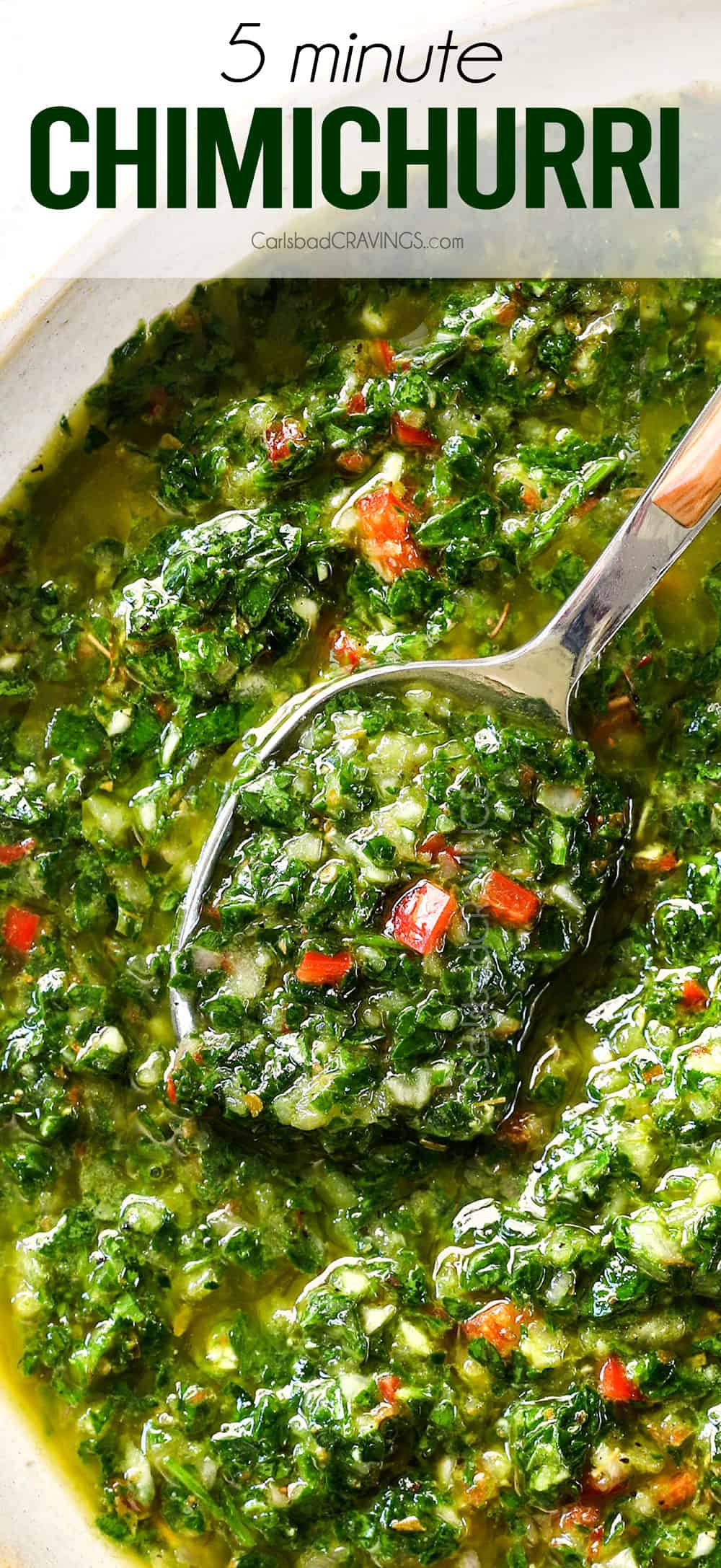
What is Chimichurri?
If you’ve never made chimichurri sauce, it’s time. Chimichurri is a vibrant, zingy, uncooked herb and oil sauce originating in Argentina and Uruguay, popular throughout South America. Chimichurri is made with a variety of herbs, garlic and olive oil; the name and color change depending on the herbs and spices used (chimichurri verde or chimichurri rojo).
This herbaceous sauce has a similar consistency and method of preparation as pesto but a zippier, tangier and often spicy flavor profile. It can be used as a condiment, dressing or marinade.
What is chimichurri made of?
Chimichurri, like many condiments with a long history, has many variations depending your region, preferences and pantry. However, purists will claim classic Argentinian chimichurri includes only fresh parsley, oregano, garlic, olive oil, red wine vinegar, chili peppers or flakes, salt and pepper.
Many non-authentic chimichurri recipes include white or red onion, shallots, cilantro, basil, lemon juice, cumin, coriander, and paprika. I have even made mango chimichurri with cilantro and Asian chimichurri with mint and fish sauce!
A nod to chimichurri rojo: While green chimichurri (chimichurri verde) is the more well-known version of chimichurri in the states, you will also find a red chimichurri (chimichurri rojo) in Argentina as well. It is made with similar ingredients with the inclusion of roasted red peppers and smoked paprika which add the red color and a smoky flavor.
What Does Chimichurri Sauce Taste Like?
Chimichurri’s bright flavors cut through the savory, richness of Argentina’s world-renowned grilled cuts of flank steak or any grilled proteins. It’s tangy, zingy, garlicky, a tad bit spicy, and jam packed with bright herbal freshness. It is a flavor bomb that ensures everything it touches is dripping with flavor.
Red wine vinegar imparts a vibrant sharpness, verdant parsley packs the herbaceous punch, oregano fortifies with earthy, peppery assertiveness, garlic injects the pungent flair and red chili peppers pump in the heat. The sauce is riddled with strong flavors which are married together by the glassy olive oil to create a lovely, cohesive depth of flavor.
Chimichurri sauce is served at room temperature over hot meats or veggies so its tapestry of flavor can really shine.
What do you eat chimichurri sauce with?
Traditionally, chimichurri is most commonly used to dress up a simple grilled steak or chicken as part of the Argentinian asado (or barbecue), but there are countless uses for this vibrant herb sauce. It is tasty spooned over fish, pork or sausage, used as a marinade, drizzled over vegetables or cheese, used as dipping sauce for crudité or bread and converted into a salad dressing with the addition of additional oil and vinegar. The possibilities are endless!
How did chimichurri get its name?
Chimichurri’s etymology is steeped in lore, but the famous sauce was most likely first connoted by gauchos (cowboys), who used it to jazz up the meat they grilled over open fires while on the pampas.
Others claim it originated with a nineteenth century Irish solider named “Jimmy McCurry” who was either a freedom fighter or meat trader traveling with indigenous troops fighting for the independence of Argentina. Because his name was difficult for Argentines to pronounce, “Jimmy’s curry” got turned into chimichurri.
More likely, however, the name comes from the Basque country word tximitxurri, meaning “a mixture of several things in no particular order.”
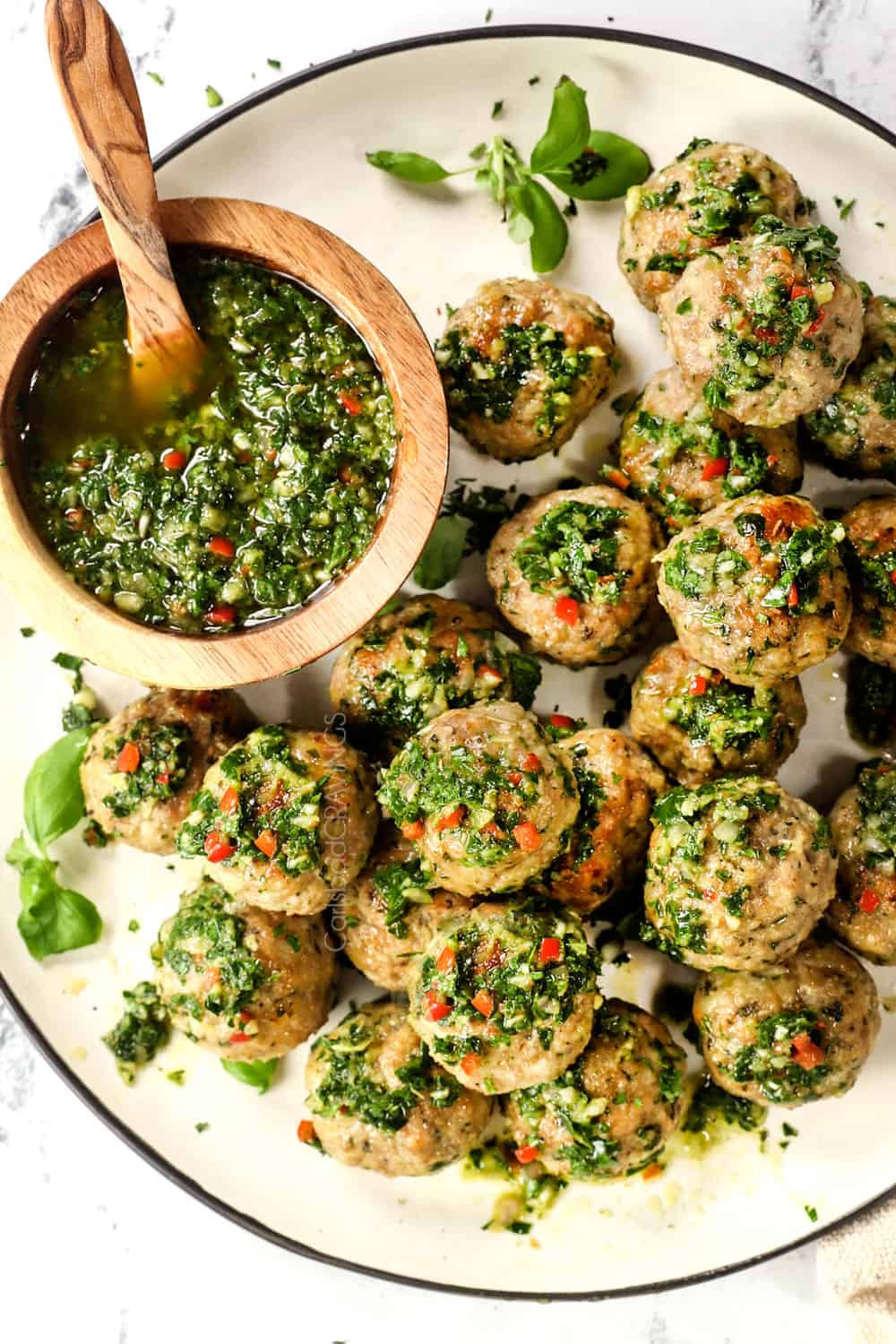
Why This chimichurri Recipe Works
If you haven’t experimented with this beloved sauce yet, it’s time. This chimichurri recipe is one of my go-to condiments year-round; its deliciousness will blow you away. You will love this recipe because:
It instantly elevates your cooking. This simple, fresh chimichurri sauce recipe is a flavor bomb that ensures everything it touches is dripping with loads of tart, garlicky, herby flavor. And bonus, chimichurri goes with just about everything!
You’ll be amazed at how easy it is to make. Just a few simple ingredients and five minutes are all you need for this transformative tangy Argentinian sauce. Just dump all the ingredients into your food processor and watch it make quick work of the fresh herbs with one push of a button. Now there are no excuses not to make this sauce and reap the dizzyingly delicious reward!
This chimichurri recipe is extremely versatile: make it just how you like it! The best thing about this recipe is you can customize the ingredients. Want classic flavors? Stick with all parsley. Want it more citrusy? Add zesty cilantro. Want it more garlicky? Add more garlic. Want it spicier? Add more red pepper flakes. Want it more or less tangy? Play with the vinegar. Just add a little of this and a splash of that until it’s perfect for YOU.
You’ll want to put it on just about everything! It’s common knowledge that colorful chimichurri sauce is a revelation with flank steak, but it is truly good on everything! I recently smothered it on my turkey meatballs (coming this week) and you guessed it, they were incredible. I have also used it on chicken, shrimp, salmon, potatoes, roasted veggies, eggs– you name it! I make a big batch and use it all week to add bright pops of YUM.
It can double as a marinade. This recipe for chimichurri sauce can doubles as a marinade and sauce for all cuts of meat – or anything else you want to pump up with bright, tangy flavor.
This chimichurri recipe keeps well. You can keep this sauce for a week in the refrigerator or freeze any leftovers (should you be so lucky).
Is This Recipe Authentic?
Authentic Argentine chimichurri is commonly made with olive oil, finely chopped parsley, oregano, red wine vinegar, garlic, and red chili peppers. I stay true to these ingredients, but I prefer to swap some of the parsley for cilantro, some of the red wine vinegar for lemon juice and add a shallot. These small changes create a more dynamic sauce, in my opinion, but you are welcome to stick with all parsley, red wine vinegar and omit the shallots if you wish.
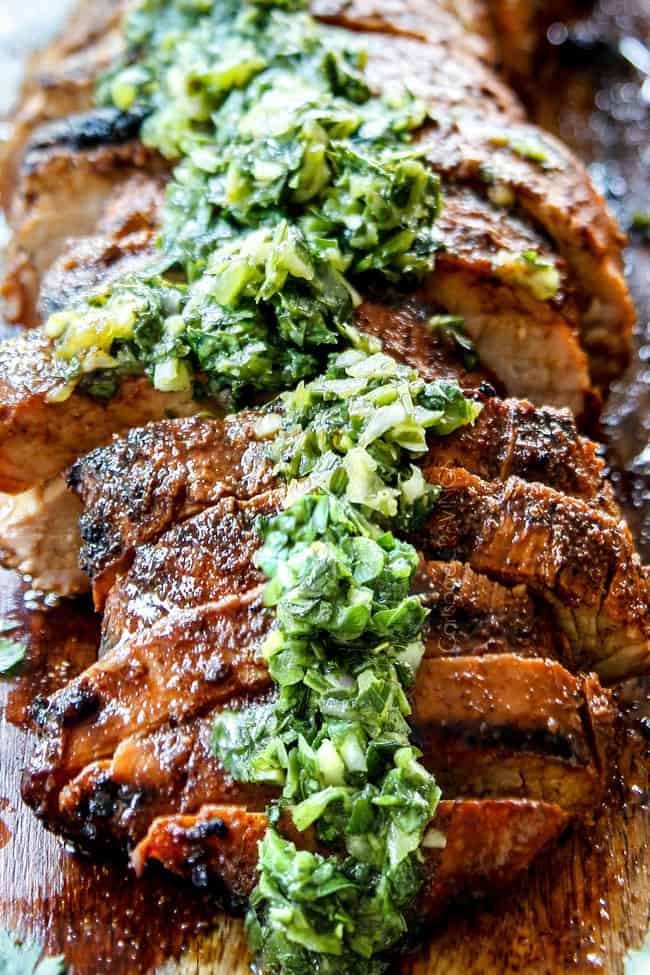
Chimichurri Recipe Ingredients and Substitutions
This best chimichurri recipe is vegan, dairy-free and gluten-free! Here’s what you’ll need to make this flavorful herb sauce:
- Parsley: Please use flat leaf parsley rather than curly parsley. Flat leaf parsley is bold and aromatic, while curly parsley can be muted and is used more for a garnish. Most importantly, curly parsley is more likely to be bitter if not extremely fresh.
- Cilantro: Is not traditionally found in chimichurri, but I love the zesty, citrusy notes it brings. Feel free to substitute it with an equal amount of parsley if you wish.
- Oregano: Is aromatic, earthy, and minty. You are welcome to use fresh or dried – but dried is actually more authentic!
- Shallot: Onions aren’t traditional in chimichurri sauce so shallots offer a subtle compromise. Shallots are milder and sweeter in flavor with a hint of garlic and won’t overwhelm the sauce, but just enhance it. One shallot is considered all of the bulbs within the shallot.
- Garlic: Look for plump and succulent fresh garlic for optimal pungent flavor. Use more or less to taste depending on how garlic forward you would like the recipe.
- Red wine vinegar: Adds the sharp tanginess that really makes the sauce come alive. I don’t recommend substituting with white or balsamic vinegar.
- Lemon juice: I like using lemon juice with red wine vinegar for multi-dimensional tanginess but you may substitute the lemon juice with red wine vinegar. Use fresh lemon juice for the best flavor but bottled may be used.
- Olive oil: You can use extra virgin olive oil for a stronger flavor, regular for a milder flavor or a blend of the two depending on your personal preference.
- Salt and pepper: Everything needs to be seasoned with salt and pepper! Season to taste.
- Red pepper flakes: Many authentic Uruguayan chimichurri recipes use fresh red chilies, so I’ve used Fresno peppers here, but feel free to use red chili flakes instead. If using fresh peppers, remove the seeds and white membranes because those carry the most heat. Save the seeds so you can add them to taste if you would like the chimichurri spicier.
Chimichurri sauce recipe variations
This chimichurri sauce recipe is extremely versatile, so feel free to go rogue and make it completely your own. Remember to start small and add more to taste.
- Go all parsley: Swap the cilantro for parsley.
- Play with green proportions: Add more cilantro instead of the parsley or vice versa.
- Basil chimichurri: Swap all or some of the parsley or cilantro for basil.
- Use other greens: Swap in other greens for the cilantro and parsley such as fresh dill, mint, kale, chard, arugula mustard greens and more.
- Customize spice level. In most regions, chimichurri is meant to be spicy but you can customize the heat. The following is for Fresno peppers; if you use a smaller/spicier pepper, you’ll need to use less. If you know you don’t like heat, start with half of a chili pepper. If you know you like some heat, start with one chili pepper. If you know you love heat, start with 2 chili peppers. Add some of the seeds to taste if you would like it spicier. Remember the sauce will have more of a kick when you taste it plain but will mellow when combined with whatever you’re serving it on or with.
- Use red chili flakes instead of fresh peppers. You may substitute the fresh chilies with 1/4-1 teaspoon of dried red chili flakes. Start with a little then add more to taste.
- More or less garlic: If you like more of a garlic forward chimichurri recipe, use 4 garlic cloves. If you like milder garlic, start with 2 cloves. After the chimichurri is mixed and allowed to rest for 15-30 minutes, you can taste and add more finely minced garlic if you prefer.
- Customize consistency. Add more or less olive oil depending on how thick or thin you prefer your chimichurri. If you would like additional olive oil, stir it in, rather than blend it to avoid bitter over-oxidation.
- Season to taste. Depending on what you’re using the sauce for and simply personal preference, be ready to adjust the sauce to taste. You may prefer a more garlicky sauce, a tangier sauce or spicier sauce.
- Asian chimichurri: I’ve served Asian chimichurri with both Asian steak and Asian salmon and it was phenomenal. Swap the parsley for cilantro, basil and mint, red wine vinegar for rice wine vinegar and oregano for ginger, fish sauce and toasted sesame oil.
- Mango chimichurri: Is another favorite version of mine. Swap most of the parsley for cilantro and the red chilies for jalapenos and add chopped juicy, sweet mangos.
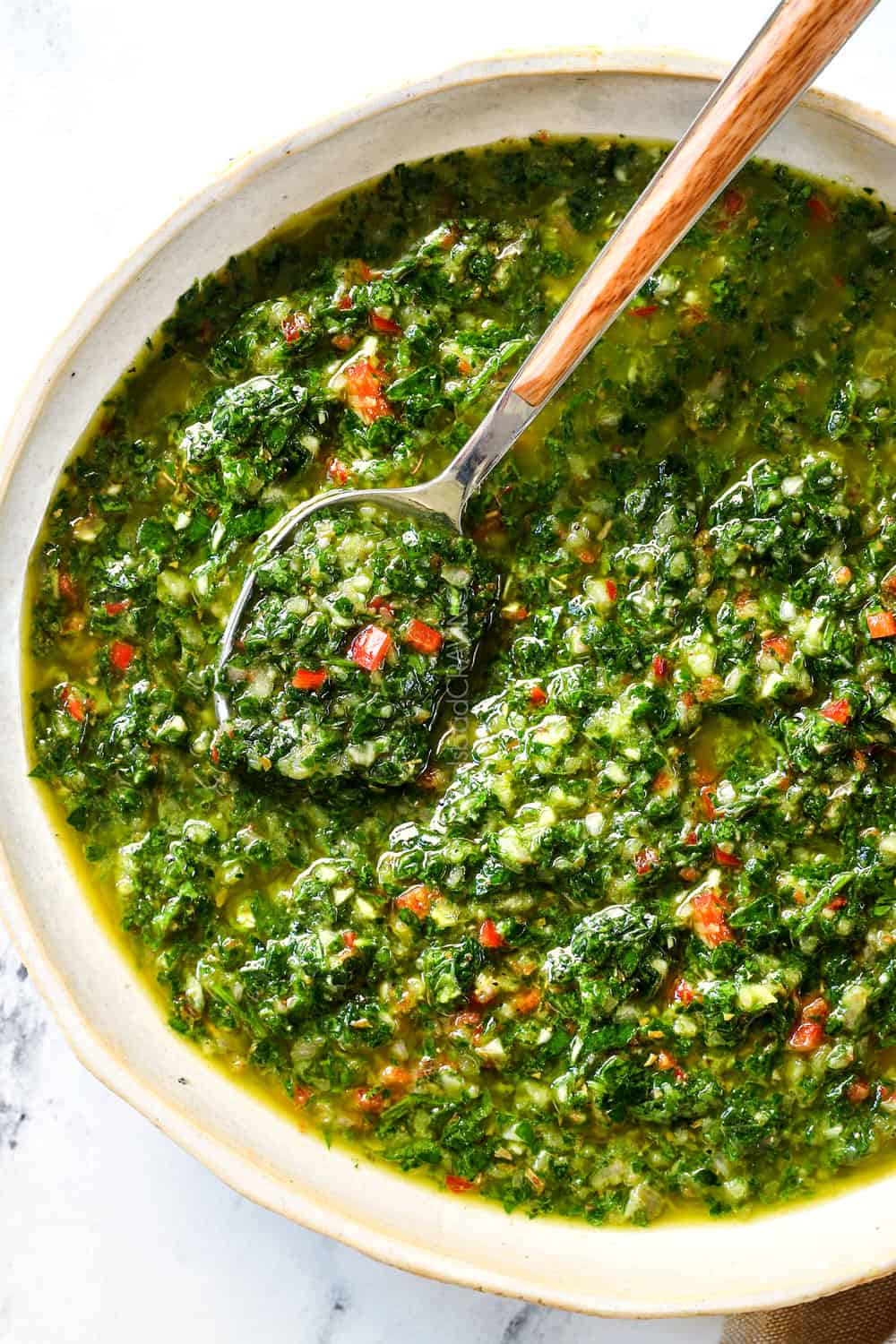
How to Make Chimichurri
Chimichurri is traditionally made with a mortar and pestle, where the parsley, oregano, garlic, chili, salt and garlic are mashed together to form a paste, and then the vinegar and olive oil are whisked or drizzled in. Today, you have the option of using a food processor or chopping everything by hand.
Option 1: Make chimichurri fast in the food processor
To make this chimichurri recipe super quickly, I recommend taking advantage of our modern-day mortar and pestle – the food processor. This method will take you just five minutes and requires no chopping at all. All you have to do is peel the garlic, peel the shallot and devein the chilies (if using) before adding to the food processor.
- Step 1: Finely chop aromatics. We want to chop the shallot and garlic first along with the vinegar and lemon juice to make sure the aromatics are finely minced before adding the parsley.
- Step 2: Chop herbs. Add parsley, cilantro and oregano. Pulse several times to chop.
- Step 3: Pour in the olive oil. Add the olive oil while the processor is running in order to emulsify the olive oil and red wine vinegar. An emulsion is simply a blend of two liquids that don’t normally bind together. The beauty of emulsification is that it creates a cohesive sauce. Don’t overmix or the olive oil can oxidize and become bitter.
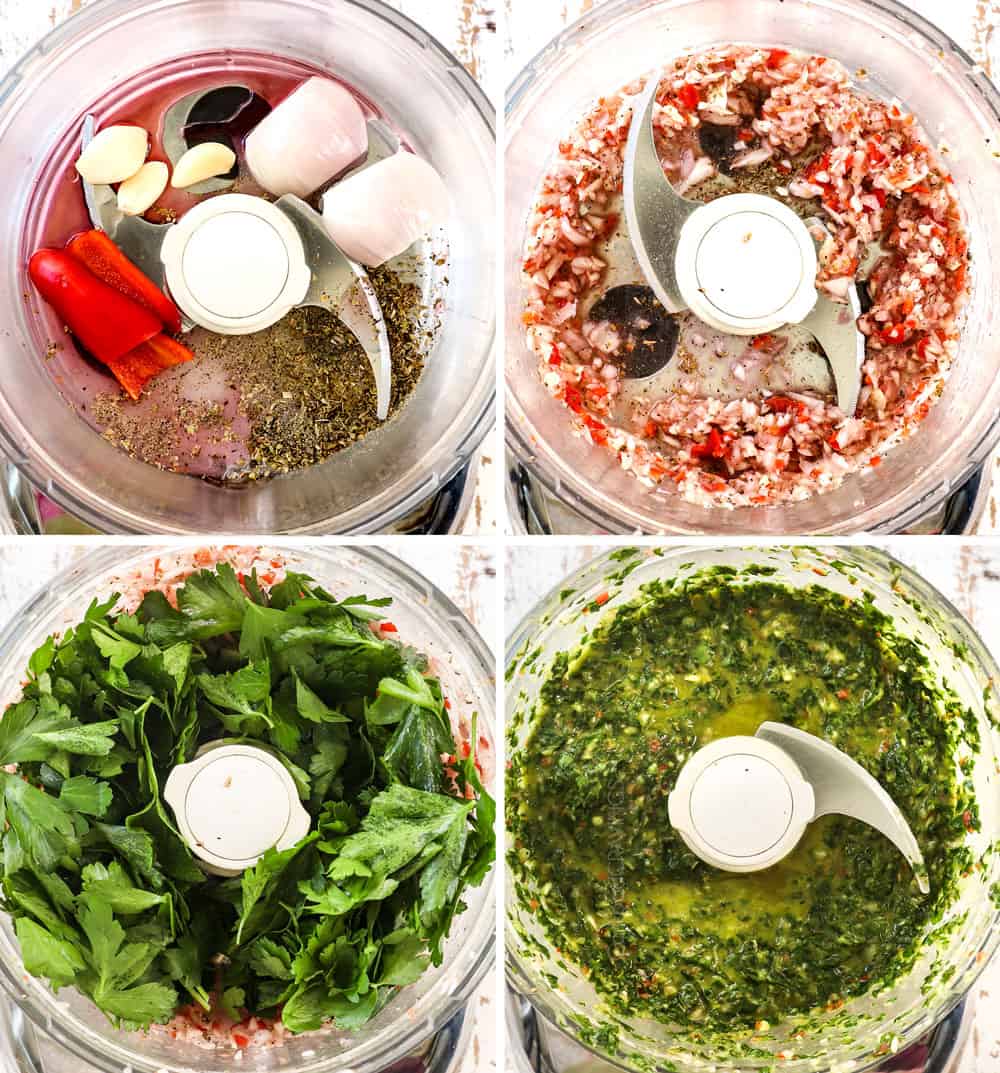
Option 2: Mix and Chop by Hand Method
If you don’t own a food processor, you can absolutely make this recipe by hand.
- Step 1: Chop ingredients. Finely chop garlic, shallots and oregano. Chop parsley and cilantro.
- Step 2: Combine. Add all of the ingredients to a bowl and stir to combine.
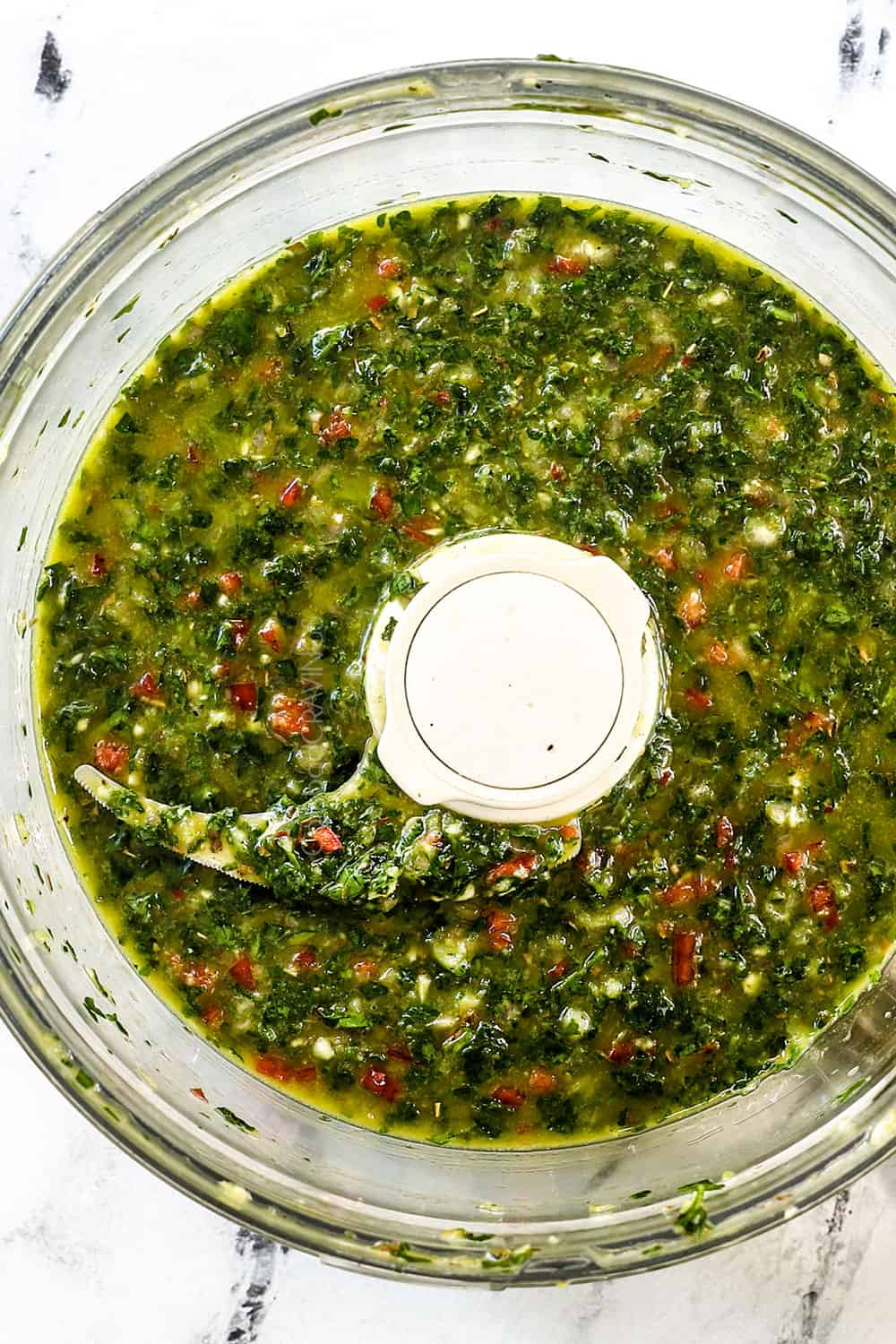
TIPS FOR the best CHIMICHURRI
- Use the freshest ingredients possible. The parsley should be perky and bright and not limp, the garlic should be plump, the shallot should be firm and heavy for its size, not dry and light.
- Taste the parsley. To avoid bitter chimichurri, always taste the parsley before making to ensure you don’t ruin the entire batch. Chimichurri sauce can taste bitter if the parsley is bitter to start with. This is more likely with curly parsley that is not fresh.
- Watch the olive oil. Different olive oils have different flavors and strengths. Choose what you like best.
- Use a food processor to make chimichurri in minutes! This eliminates all of the elbow grease which means you’re more likely to make it, and more often. If you don’t have a food processor you are welcome to chop by hand.
- For the best consistency, chop the aromatics first and then add the parsley. Chopping both the aromatics and herbs at once won’t chop the aromatics fine enough OR if you do, the parsley will be over-processed. Chopping them in this order will keep the herbs bright and green and avoid mushy chimichurri.
- Don’t over-process the parsley. The chimichurri sauce should not be pureed into an herb mash or thick paste. Rather, the parsley should still have body and texture and there should be enough oil (because it’s not pureed) to be a loose, oil-based condiment.
- Don’t over-process the olive oil. Only pulse the oil a few times in order to combine. If you over-process the oil, its polyphenols can break away from the fatty acids causing oxidation which will make the chimichurri taste bitter. If you’re worried about this, you may stir the olive oil in by hand.
- Let flavors meld. Chimichurri is best if allowed to rest for at least 15 minutes before serving, preferable 2 hours, to let the flavors meld.
- Serve at room temperature. If you’re not serving the sauce within 2 hours, then cover, chill in the refrigerator then take out of the refrigerator at least 30 minutes before serving. This takes the chill off and let the flavors really shine.
- Adjust chimichurri sauce recipe to your taste. If you’re not sure how strong, spicy or tangy you would like your chimichurri sauce, start with small amounts and gradually add more to taste. You can always add more garlic, salt, pepper, chili vinegar, etc., but they’re hard to take away.
- Adjust to taste after the sauce has rested for 15-30 minutes or right before serving. The chimichurri recipe will taste differently right after making it verses after letting it rest. Always keep in mind the flavor profile of what your are serving it with when adjusting to taste.
- When adding more ingredients to taste, mince them by hand. Don’t add whole ingredients to the already chopped chimichurri sauce in the food processor or it will become over-processed. Instead, chop the ingredients then stir them in by hand.
Uses for Chimichurri Sauce
When it comes to the uses of this chimichurri recipe, the possibilities are endless! It’s sauce gold when draping steak, chicken, fish, vegetables and even when served as a dip!
Here are just a few ideas:
- Protein topper: Chimichurri isn’t just for steak, and it isn’t just for grilled proteins. It brightens up chicken, fish, salmon, shrimp, pork, sausage, lamb. etc., no matter how they’re prepared.
- Killer dipping sauce: Serve this chimichurri recipe as is or swirl it with some sour cream, Greek yogurt or cottage cheese to create a creamy vibrant herb dip. Serve it with crudité (celery sticks, carrot sticks, cucumber sticks, bell pepper strips, broccoli, cauliflower, radishes, baby corn, asparagus spears, sugar peas, cucumber slices, etc.), steamed veggies, bread, crostini and meatballs.
- Marinade for all manner of things: Whisk together the chimichurri and use some for a marinade and some for topping your protein after it’s cooked. You can also use it to marinate veggies!
- Salad dressing: It’s easy to convert this chimichurri sauce recipe into a salad dressing by adding additional oil to reach your desired consistency and a splash more vinegar to compensate. Serve the dressing over green salads, corn salad, pasta salad, potato salad, grain salad, etc.
- Vegetable sauce: Chimichurri + vegetables will have you craving your greens! Toss or drizzle roasted, steamed, sautéed or grilled vegetables with chimichurri and you’ll never have bland vegetables again. It’s particularly fabulous on grilled veggie kabobs, potatoes (roasted cubes, baked whole or mashed), sweet potatoes, butternut squash, carrots, Brussels sprouts, broccoli, cauliflower, etc.
- Grain flavor builder: I love adding chimichurri to grains such as brown rice, wild rice, farro, quinoa, etc. whether serving them plain or as part of a grain bowl.
- Egg condiment: Top your scrambled, fried, or sunny side up eggs with chimichurri and sink your teeth into an explosion of flavor.
- Pasta sauce: Thin the sauce with some olive oil and toss it with your favorite pasta.
- Sandwich spread: Whisk chimichurri with a couple tablespoons mayonnaise, sour cream or Greek yogurt and slather on sandwiches, bagels, toast or crostini toasts.
- Garlic bread spread: Combine it with some softened butter and Parmesan and slather over bread and bake to create the ultimate garlic bread.
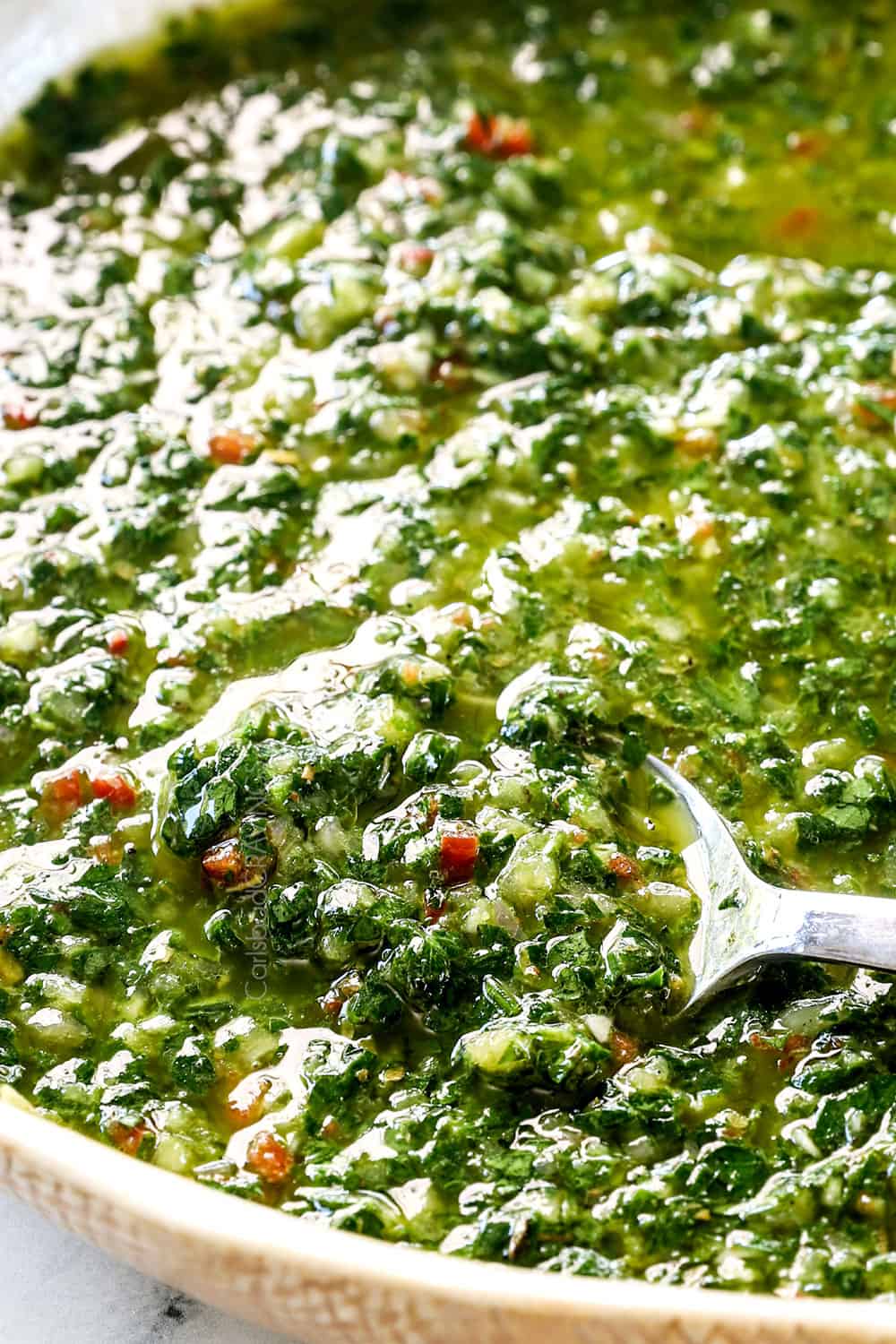
What is the best way to store chimichurri?
Chimichurri is made with natural, fresh ingredients so it needs to be stored in the refrigerator. It will keep in an airtight container in the fridge for up to 10 days (but as always, use your discretion), but it is at peak freshness the first day it is made and then tapers from there.
Can chimichurri be made ahead of time?
Yes, chimichurri tastes even better if allowed to sit for at least 30 minutes at room temperature for the flavors to build and meld. While it can be made days ahead of time, I find it tastes best the first day it is made.
Can I Freeze chimichurri?
Yes, freezing chimichurri is a great way to use up an abundance of summertime herbs or to always have some on hand. I like to make a full batch, divide it in half or thirds, then freeze some in plastic bags or half-pint jars for later. You can also freeze chimichurri in an ice cube tray for smaller servings (transfer cubes to an airtight container after frozen through). Freeze chimichurri sauce for up to 2 months then thaw in the refrigerator when ready to use (don’t microwave or the sauce will lose its freshness).
Frequently Asked Questions
Like many recipes, chimichurri varies from region to region. In some areas of Argentina, chimichurri is heavy on garlic and light on spice, in other areas, it is light on garlic and heavy on spice; in some areas, it doesn’t contain red pepper flakes at all! In the United States, however, chimichurri is increasingly seen as a spicy herb sauce. The chili flakes cut through and compliment sauce’s tangy, robustness. The beauty about making your own chimichurri recipe, however, is that you can customize the spice level. If you’re sensitive to spicy foods, start with less chili flakes and add more to taste.
Chimichurri is packed with healthy ingredients like parsley and garlic which translates to loads of good-for-you benefits, including calcium, carotenes, iron, fiber and vitamins A, C, E and K. It is naturally low in carbs and sugar-free. The base of the sauce, however, is olive oil, which is a heart-healthy monounsaturated fat, which means it is high in calories and should be enjoyed in moderation.
Chimichurri sauce can taste bitter either because 1) the parsley is bitter to start with and has tainted the sauce, or 2) the sauce was overmixed with the olive oil causing oxidation. To prevent bitter chimichurri, make sure to taste the parsley before using and don’t mix the olive oil at too high of a speed or for too long or the polyphenols in the olive oil break away from the fatty acids resulting bitter tasting chimichurri.
Yes, when measuring parsley, chop the leafy top of the bunch away from the bottom stems, but you don’t need to remove the leaves from the stems.
Chimichurri sauce is made of fresh herbs so it can go bad quickly if not refrigerated. When refrigerated it can last up to 10 days. You’ll know your chimichurri has gone bad once it tastes bitter, caused by either the herbs or the oil breaking down.
Technically, chimichurri can sit out overnight, but it is best if refrigerated after 2 hours in order to prolong its shelf life.
Both pesto and chimichurri are herb, garlic, olive oil-based sauces, but the similarities stop there. Chimichurri is primarily made of parsley, whereas, pesto is made of basil. Chimichurri is tangy and spicy due to the addition of red wine vinegar and red chili flakes, whereas pesto is earthy, nutty and salty due to the addition of Parmesan and pine nuts. Chimichurri is most commonly used as a marinade for meats or for basting or draping grilled meats, whereas pesto is most commonly used in pasta dishes.
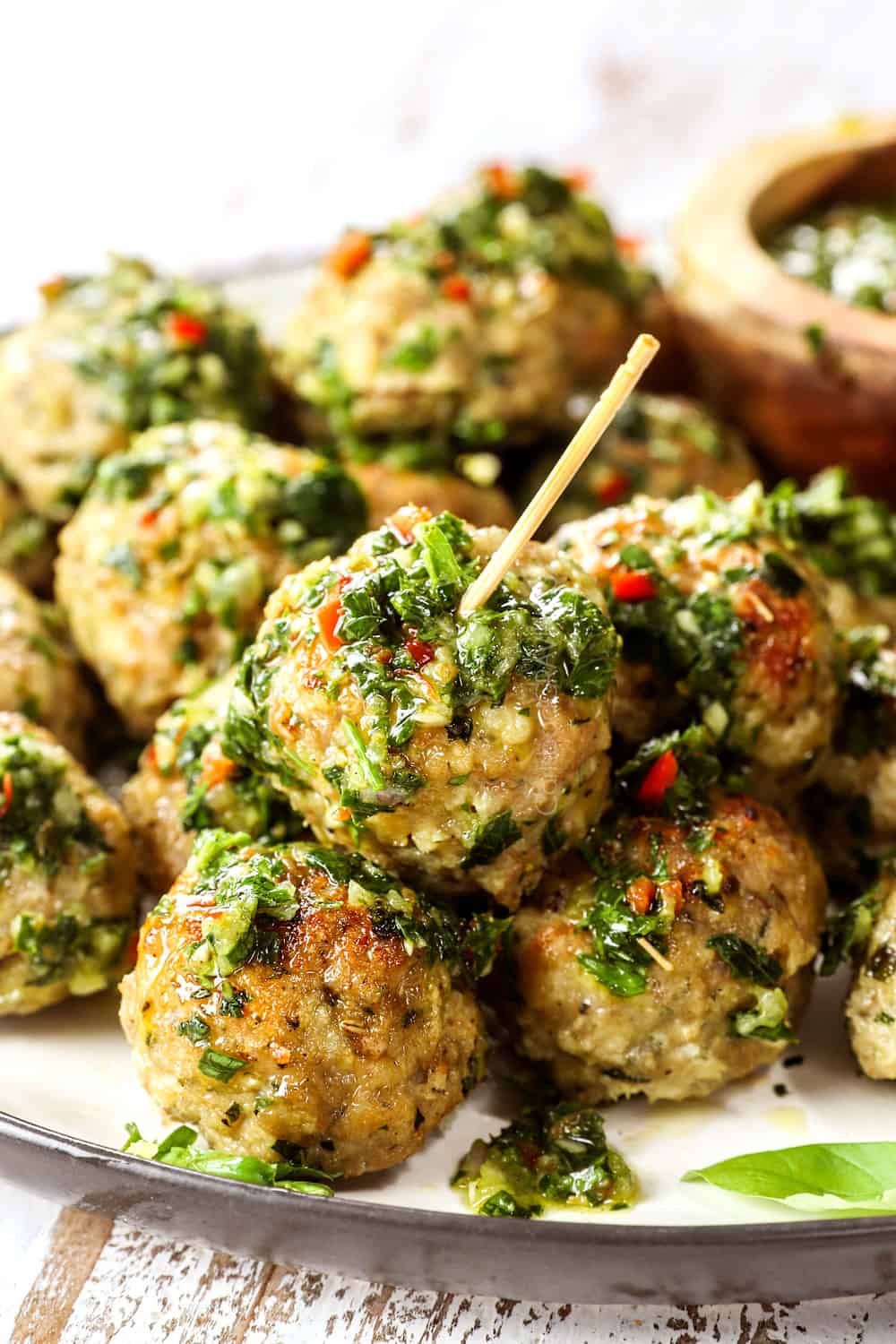
WANT TO TRY THIS chimichurri RECIPE?
PIN IT TO YOUR sauces or grilling BOARD TO SAVE FOR LATER!
FIND ME ON PINTEREST FOR MORE GREAT RECIPES! I AM ALWAYS PINNING :)!
©Carlsbad Cravings by CarlsbadCravings.com
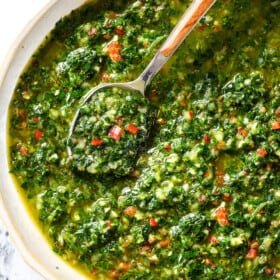
Chimichurri Sauce
Save This Recipe To Your Recipe Box
You can now create an account on our site and save your favorite recipes all in one place!
Ingredients
- 1 shallot, peeled
- 3-4 garlic cloves, peeled
- 1-2 small red chilies, seeded (OR sub 1/2-1 tsp red pepper flakes)
- 3 tablespoons red wine vinegar
- 1 tablespoon lemon juice
- 1/2 teaspoon salt
- 1/4 teaspoon pepper
ADD LAST
- 1 cup packed flat-leaf parsley
- 1/2 cup packed cilantro (may sub flat-leaf parsley)
- 2 tablespoon fresh oregano or 2 tsp dried
- 1/2 cup olive oil
Instructions
- Add shallot, garlic, chili peppers/flakes, red wine vinegar, lemon juice and salt and pepper to a food processor. Pulse, stopping and scraping down sides occasionally until finely minced.
- Add parsley, cilantro and oregano; pulse until the herbs are almost chopped to desired consistency. Pour in the olive oil while pulsing to combine, just until the herb leaves are finely minced but still have some body. Don’t over-process once you add the olive oil or the chimichurri can taste bitter.
- Transfer chimichurri to a bowl or airtight container. Let rest 15-30 minutes at room temperature before adjusting to taste. Add additional red wine vinegar for tangier, red pepper flakes for spicier or salt and pepper if desired.
- Chimichurri is best if allowed to sit at room temperature for 30 minutes to 2 hours before serving. If not serving for a few hours, cover and chill in refrigerator then allow to return to room temperature before serving.
Video
Notes
Tips and Tricks
- Parsley: Please use flat leaf parsley rather than curly parsley. Flat leaf parsley is bold and aromatic, while curly parsley can be muted and is used more for a garnish. To avoid bitter chimichurri, always taste the parsley before making to ensure you don’t ruin the entire batch.
- Shallot: Shallots enhance the sauce but aren’t traditional in chimichurri, so take them or leave them. One shallot is considered all of the bulbs within the shallot. You may also use ¼ of a red onion.
- Red wine vinegar: I don’t recommend substituting with white or balsamic vinegar.
- Adjust to taste: If you’re not sure how strong, spicy or tangy you would like your chimichurri sauce, start with small amounts and gradually add more to taste. You can always add more garlic, salt, pepper, chili vinegar, etc., but they’re hard to take away.
- Recipe variations: See post for fun ways to mix up your recipe.
- Recipe uses: See all sorts of tasty ways to use your chimichurri.
- Storage: Chimichurri will keep in an airtight container in the fridge for up to 10 days (but as always, use your discretion), but it is at peak freshness the first day it is made and then tapers from there.
- Freezer directions: I like to make a full batch, divide it in half or thirds, then freeze some in plastic bags or half-pint jars for later. You can also freeze chimichurri in an ice cube tray for smaller servings (transfer cubes to an airtight container after frozen through). Freeze chimichurri sauce for up to 2 months then thaw in the refrigerator when ready to use (don’t microwave or the sauce will lose its freshness).

Did You Make This Recipe?
Tag @CarlsbadCravings and Use #CarlsbadCravngs
Leave a Review, I Always Love Hearing From You!




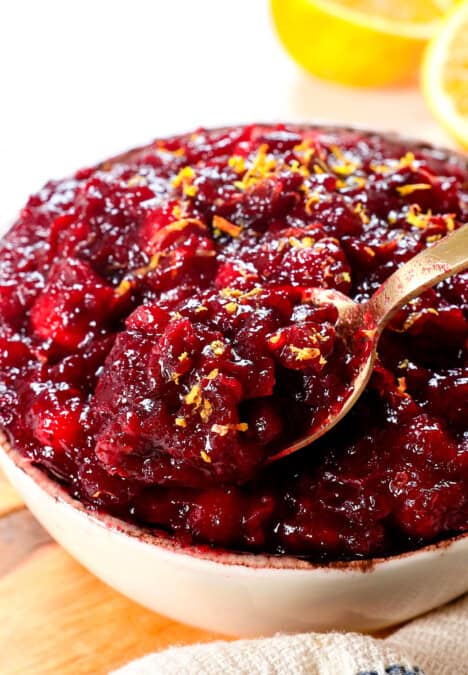
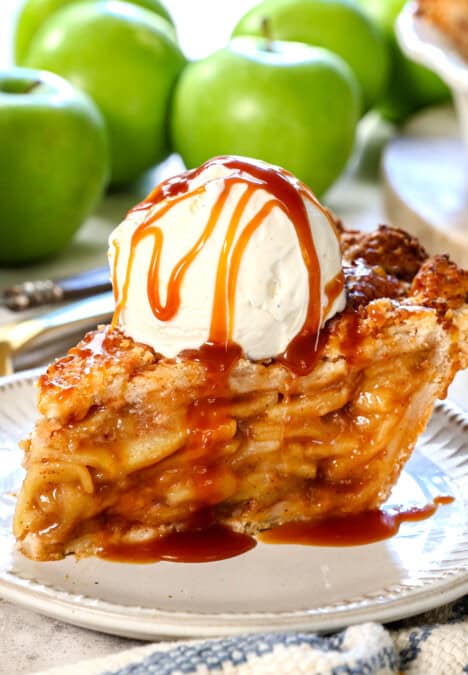


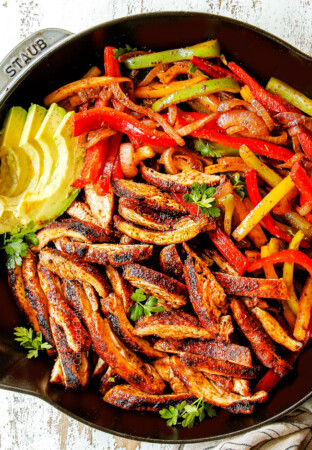
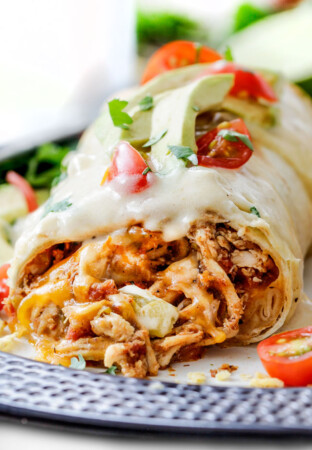
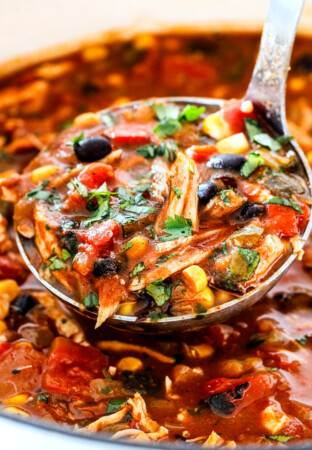
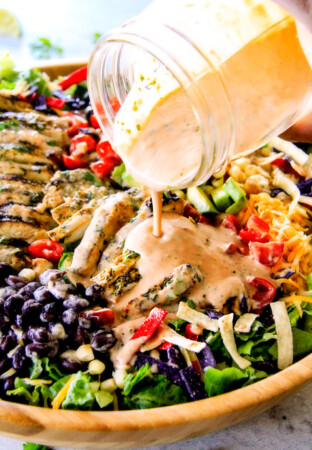
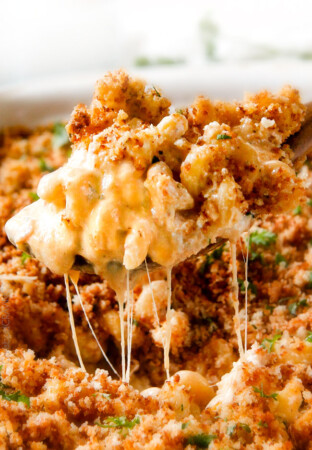



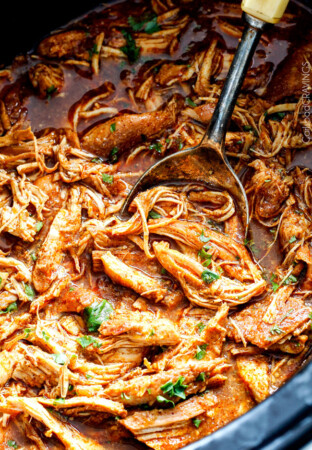




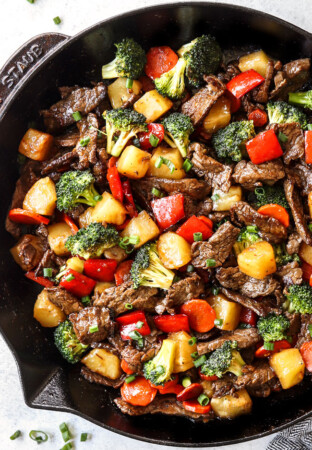
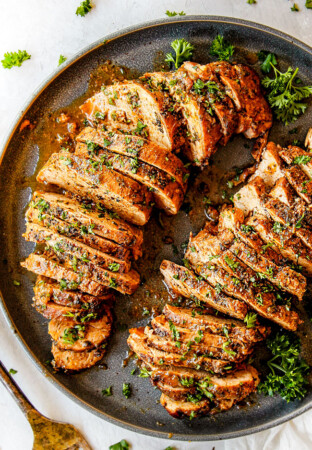
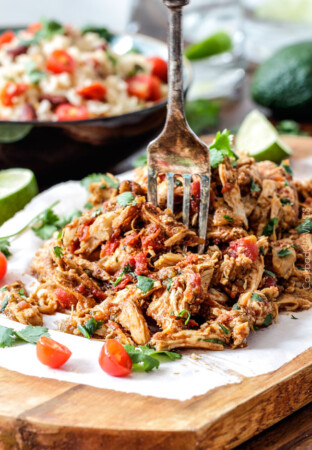
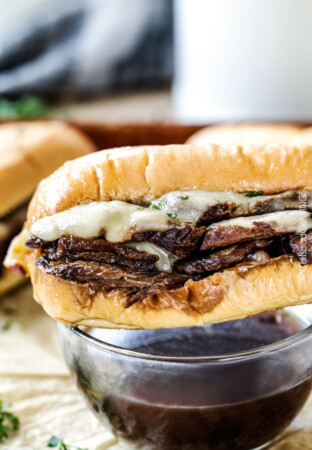
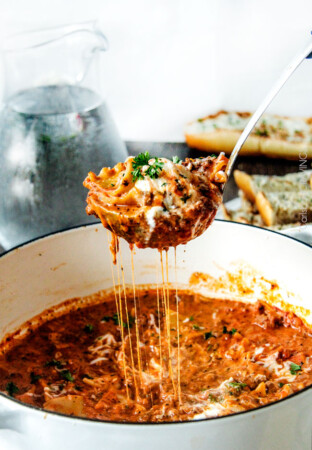

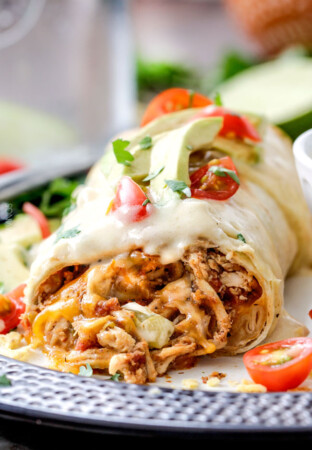

leave a review